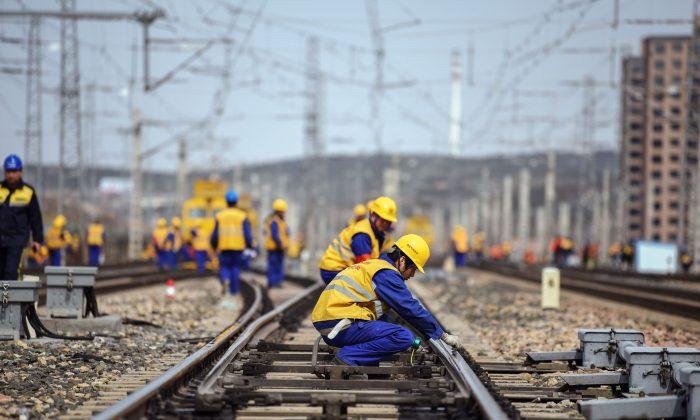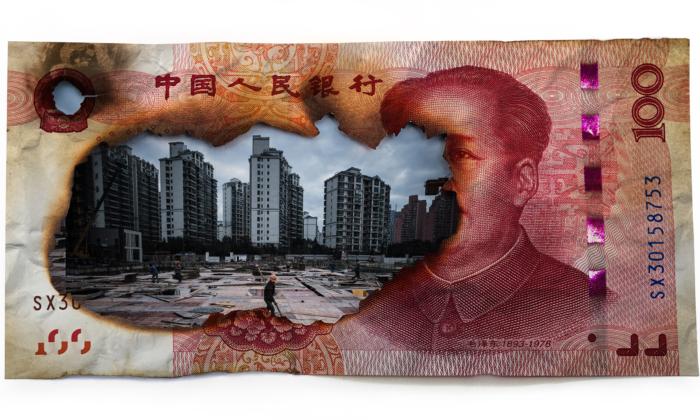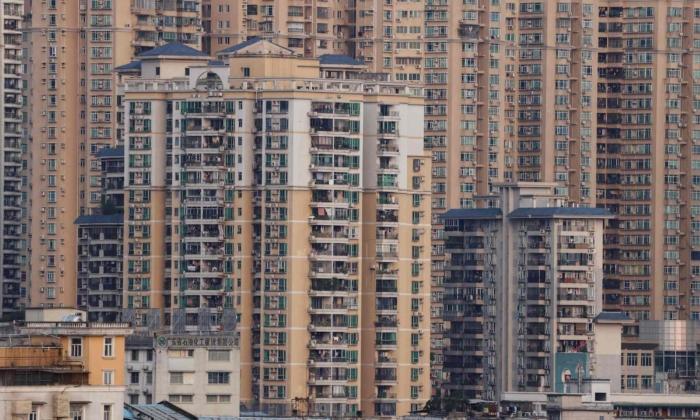China has opened the credit spigot. Credit growth in March exceeded all estimates after a slowdown in February, according to official central bank data on April 12.
Total social financing (TSF), a broad measure of credit within the Chinese economy, grew by a net 2.86 trillion yuan ($426 billion) in March compared to the previous month, after a relatively modest increase of 703 billion yuan in February. TSF includes financing that is outside of traditional banking loans, such as loans issued by trust companies, initial public offerings, and bond offerings.
While Beijing has pulled out all the stops to ensure economic growth are stable in the short-term—first quarter GDP (Gross Domestic Product) figures will arrive next week—it’s exacerbating longer-term leverage issues.
March’s credit growth was broad-based, with financial institutions underwriting 1.69 trillion yuan ($252 billion) of new loans in March. Bank loans and M2 money supply—a measure of cash in circulation—also grew during the month. This credit growth and an uptick in manufacturing purchasing managers’ index for March are signs that recent policy easing is bearing some fruit.
Since last year, Beijing authorities and the People’s Bank of China have taken a series of measures to combat economic slowdown triggered by the 2017 deleveraging campaign and a debilitating trade war with the United States.
The easing measures included five cuts to banks’ reserve requirement ratios, allowance of perpetual bond issuances, and infrastructure spending.
Timing Is Critical
This round of stimulus measures—and the resulting credit growth—seems different. Unlike previous periods, this series of policy easing isn’t attempting to invigorate growth but to combat an ongoing growth slowdown.March’s credit growth will be seen as extremely helpful. Beijing is set to release its GDP growth rate for the first quarter next week. All eyes are fixated on the first-quarter GDP metric, which will determine the course of action for the rest of the year.
At a macro level, 2019 is an especially fraught year economically and politically. The Chinese Communist Party (CCP) leader Xi Jinping kicked off the year in January with a meeting to address “extraordinary risks” facing the economy and by extension, China’s political, ideological, and social stability.
Various degrees of political anxiety will last the entire year. April 15 will mark the 30th anniversary of the passing of former Party leader Hu Yaobang, a reformist whose death in 1989 was seen as one of the triggers for the Tiananmen Square student protests. Next month marks the 100th anniversary of the May 4th reformist movement, and June brings the 30th anniversary of the Tiananmen Square Massacre. Later in the year, the 70th anniversary of the founding of the People’s Republic of China will be commemorated.
Trading Future for Present
But China’s longer term issues will likely worsen going forward. Beijing has essentially traded longer-term economic health for near-term stability.The International Monetary Fund (IMF) recently warned that China will face a “sharp slowdown” in the future if it continues to loosen monetary policy or engage in massive infrastructure spending to shore up growth, according to IMF’s semi-annual Global Financial Stability report.
“Further monetary and credit support may exacerbate the existing financial vulnerabilities, as faster credit growth will make it harder for smaller banks to clean up their balance sheets,” said IMF’s Tobias Adrian, Director of Monetary and Capital Markets Department, during an April 10 press conference.
Beijing has essentially abandoned its recent efforts to deleverage the economy, and instead is doubling down on infrastructure and real estate, two already overleveraged sectors.
Regulators have also delayed reforms over China’s sprawling asset management industry and instead are creating more potentially bad debts. China’s National Audit Office recently found that some banks in central Henan Province had registered 40 percent of their loan books as bad debt at the end of 2018, according to an April 8 Financial Times report.
In addition, while recent tax cut measures are temporarily boosting consumption, they come at the expense of putting pressure on local and regional budgets.
It’s important to remember that the United States and European economies are still on solid footing. So if China uses up all of its ammunition to stabilize economic growth during 2019, what will it do when the global economy really falters and demand slows?





